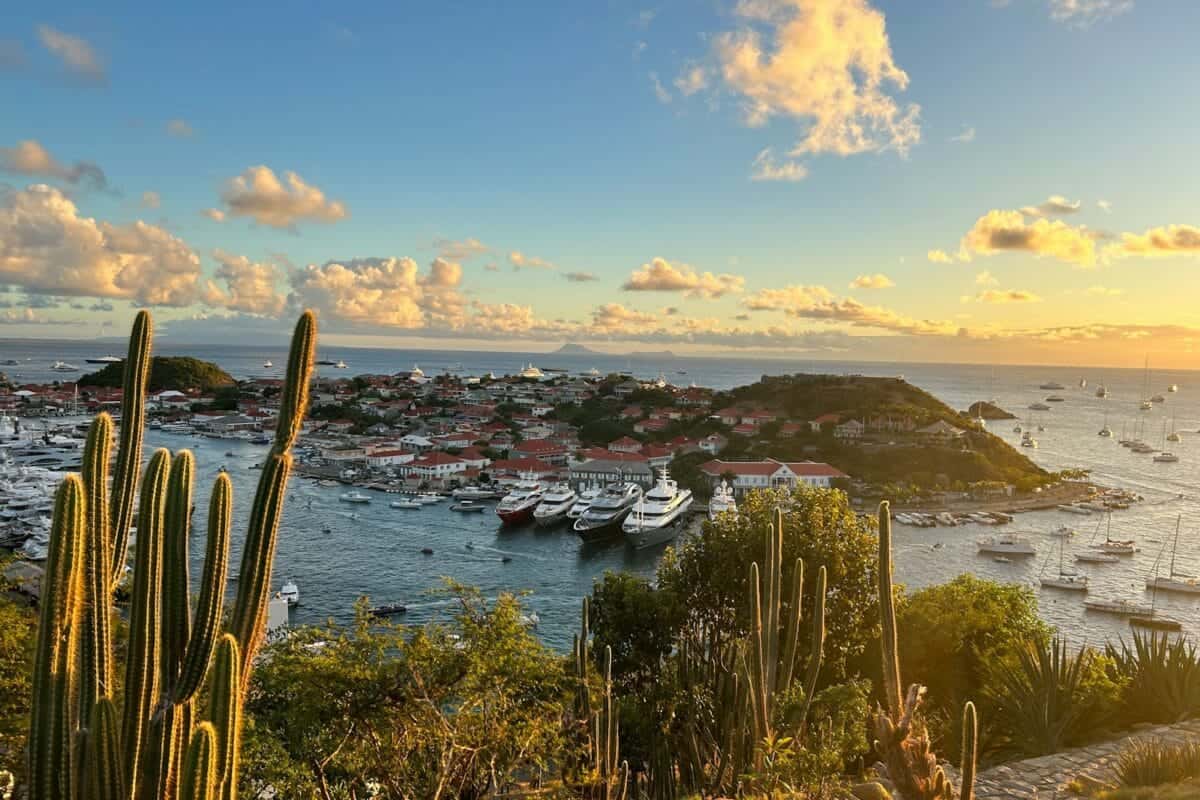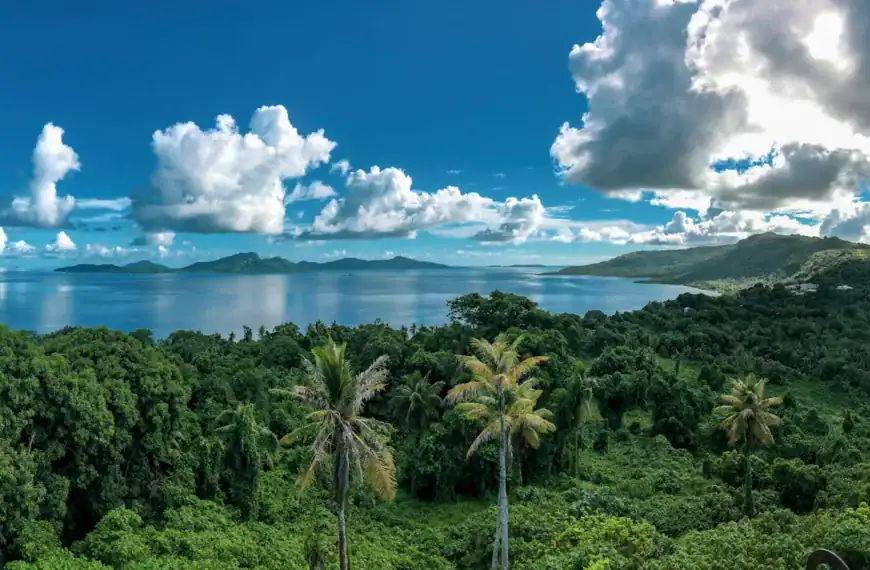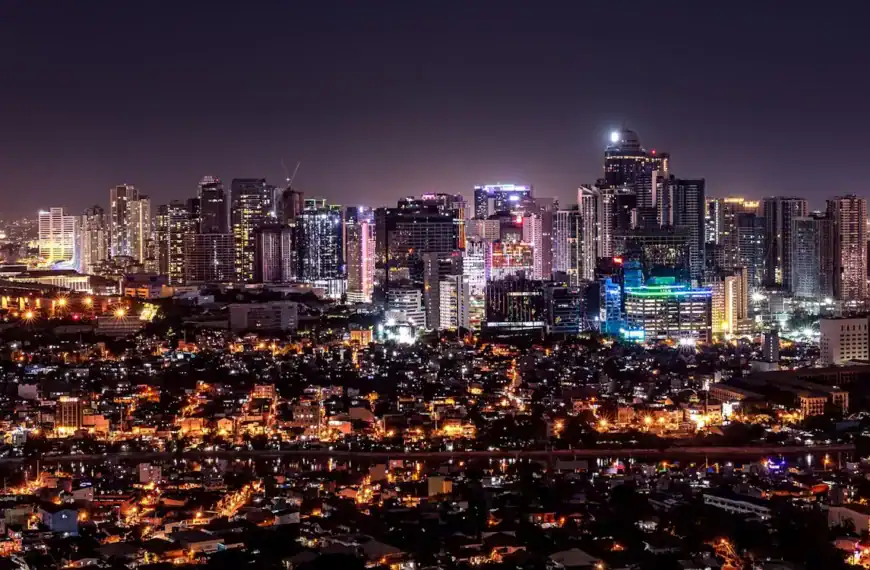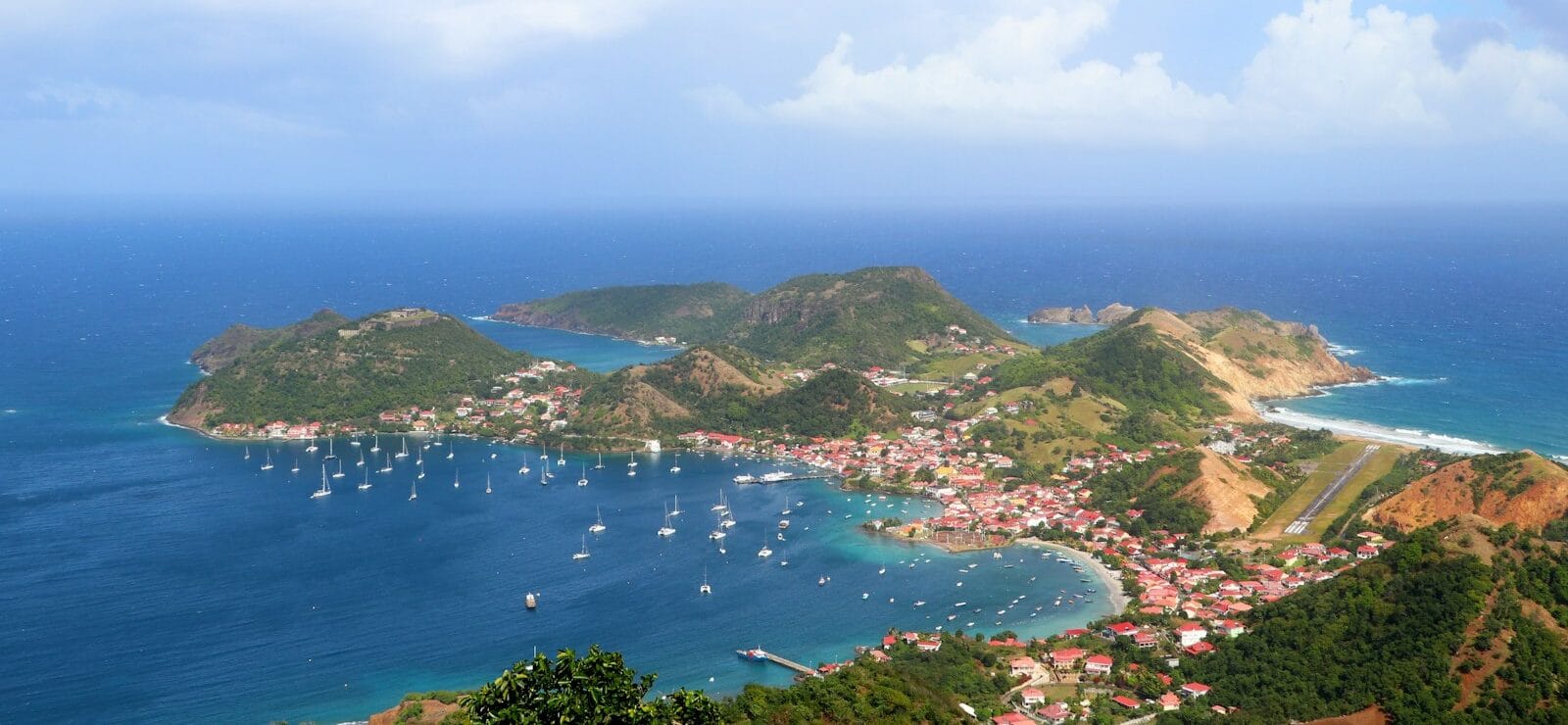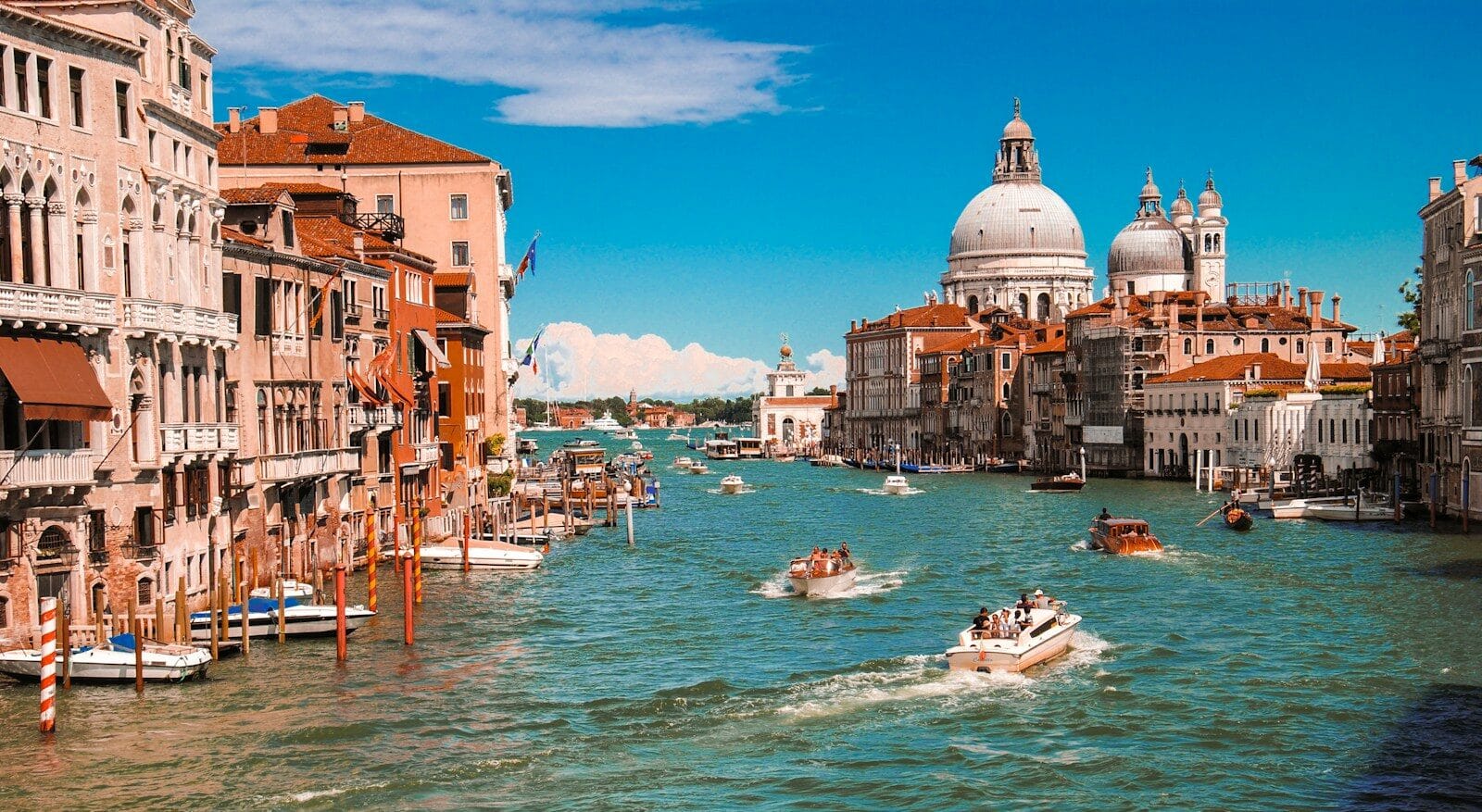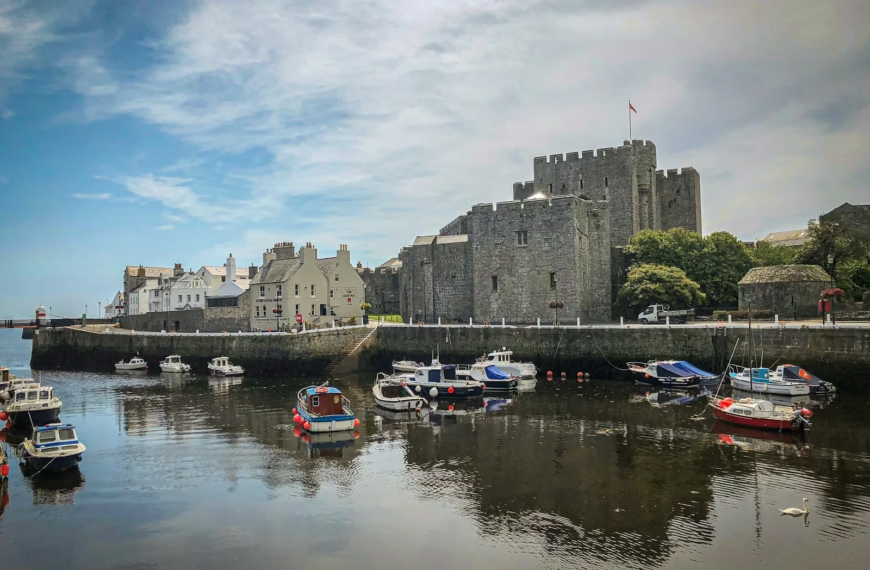St Barthelemy Travel Guide: Caribbean Chic Meets French Island Soul
Intro to St Barthelemy Travel Guide
St. Barthelemy — or St. Barth — is a tiny Caribbean gem where European elegance blends seamlessly with island ease. Known for luxury yachts, designer boutiques, secluded beaches, and French-Caribbean fusion cuisine, this French overseas collectivity offers both glamor and laid-back natural beauty. But beyond the celebrity appeal lies a warm, walkable island rich in culture, history, and postcard-perfect coastal escapes.
Start planning your dream escape with our complete St. Barthelemy travel guide — from region-by-region insights to must-do experiences, island logistics, and travel cost breakdowns.
💡Quick Facts:
Destination: Saint Barthélemy (St. Barts)
Continent: North America (Caribbean)
Country: France (Overseas Collectivity)
Administrative Division: Single-island collectivity within the French West Indies
Area: 25 km²
Population: ~10,000
Density: ~400 people per km²
Capital: Gustavia
Regions/Subregions: Gustavia, St. Jean, Lorient, Colombier, Grand Cul-de-Sac, Flamands
Official & Regional Languages: French (official), English widely spoken in tourism and retail
Currency: Euro (€); U.S. Dollar also accepted in some locations
Time Zone(s): Atlantic Standard Time (AST – GMT-4)
Airports: Gustaf III Airport (SBH); ferry and flight connections via St. Maarten (SXM)
Climate: Tropical – warm and sunny year-round with a mild rainy season
Known For: Luxury tourism, designer shopping, celebrity villas, white-sand beaches, French-Caribbean fusion cuisine, sailing regattas
🛂Arrival Info:
– Part of the French Overseas Territories; Schengen visa rules apply
– Visa-free access for 90 days (in any 180-day period) for U.S., Canada, UK, EU, and many others
– Entry usually via St. Maarten (SXM) – ferry or connecting flight required
– No customs for EU citizens; passport required for all non-French nationals
– France-Visas Portal
💉Health Info:
– No required vaccines unless arriving from a yellow fever risk country
– Recommended: Routine immunizations, Hepatitis A, B, and tetanus
– Clinics and pharmacies available; emergency care via small hospital in Gustavia
– For serious emergencies, patients are evacuated to Guadeloupe or St. Maarten
– French Caribbean Health Info
✅ Check travel insurance options for travel emergencies, delays, and medical needs abroad — get coverage here
✅ Stay Informed with Official Updates: World Health Organization – International Travel and Health | Travel health updates
🚨Travel Advisory:
– Very safe, upscale destination with low crime
– Occasional petty theft or vehicle break-ins – use caution with valuables
– Hurricane season runs from June to November — monitor advisories if traveling in this period
✅ Stay Informed with Official Updates: US Travel Advisory | UK Foreign Travel Advice
📅Holidays:
– French national holidays are observed, including:
– Bastille Day (July 14)
– All Saints Day (November 1)
– Labor Day (May 1)
– St. Bartholomew Festival (August 24): Local celebration with music and fireworks
– New Year’s Eve and Les Voiles de St. Barth (April): High-profile events
💰Visitor Info:
– Currency: Euro (€); USD accepted in some shops and restaurants
– ATMs available in Gustavia and St. Jean
– Credit cards widely accepted, especially at hotels, boutiques, and restaurants
– Tipping: Not required; service charge usually included (but 5–10% appreciated for good service)
– Budget: €120–€180/day | Mid-range: €250–€400/day | Luxury: €500+/day
– Prices are among the highest in the Caribbean — St. Barts is a luxury market
✈️Airports:
– Gustaf III Airport (SBH): Short runway; small regional flights only
– Most travelers connect via Princess Juliana Airport (SXM) in St. Maarten
– From SXM: 10-minute flights or 45–60 min ferry via Great Bay Express or Voyager
– Island-wide taxi service available; no ride-hailing apps
✅ Delayed or canceled flight? Check if you’re eligible for compensation
🚍Transport:
– Rental cars (compact or Mini Coopers) are the preferred option
– Narrow roads and steep hills — drive cautiously
– Taxis available but limited and expensive; not metered — agree on fare in advance
– No public transportation or buses
– Parking in Gustavia can be limited during peak season
✅ Book reliable airport transfers and in-city rides in advance. Reserve your ride here
📶Connectivity:
– SIM cards from Digicel and Orange available, but most hotels include Wi-Fi
– 4G available across most of the island
– eSIM support available via international providers
– Roaming charges apply for non-EU visitors; U.S. travelers should confirm Caribbean coverage
– Free Wi-Fi available at hotels, luxury villas, cafés, and Gustavia marina
✅ Stay connected abroad with affordable eSIM data packs. Get your eSIM here
📜Laws & Etiquette:
– Legal drinking age: 18; alcohol served freely at most establishments
– Dress is upscale casual; beachwear not appropriate in towns or restaurants
– LGBTQ+ travelers welcome; open and inclusive destination
– French customs apply: polite greetings, no loud behavior in public
– Nudity is prohibited; topless sunbathing tolerated at some beaches
🛡️Emergency Info:
– Emergency: 112 (universal EU number), 18 (fire), 15 (medical)
– Nearest full-service hospital: Louis-Constant Fleming Hospital (St. Martin)
– U.S. consular services via St. Maarten or Guadeloupe
– Local police and maritime safety stations located in Gustavia
✅ Use embassy locator tools: Embassies Worldwide
🌦️Weather:
– Dry season (Dec–May): Ideal beach weather, temps 24–30°C (75–86°F)
– Wet season (June–Nov): Higher humidity and chance of tropical storms
– Hurricane risk highest Aug–Oct – travel insurance advised
– Year-round sunshine with cooling trade winds and brief tropical showers
✅ Stay prepared—check the weather forecast for your destination — Weather Forecast
St. Barthelemy by Region – Where to Go
Although just 25 square kilometers in size, St. Barth has distinct areas offering different vibes — from luxury enclaves to surfer beaches.
Gustavia
The capital and main port town. Home to high-end shopping, duty-free boutiques, French restaurants, and colonial-era sites. Visit Fort Karl, Shell Beach, and enjoy harbor views lined with superyachts.
St. Jean
The island’s trendiest beach town. With Nikki Beach parties on one end and Eden Rock elegance on the other, St. Jean mixes surf, style, and boutique hotels. Its walkable layout makes it a favorite for first-timers.
Colombier
A peaceful and exclusive area on the northwest tip. Accessible via hiking trail or boat, Colombier Beach offers seclusion, clear waters, and views of passing sailboats. No direct road access — perfect for privacy seekers.
Lorient
A quieter village with surf breaks, traditional Catholic churches, and laid-back beach bars. Great for families or long-stay travelers looking for authenticity.
Saline & Grand Fond
Home to Saline Beach — one of the most pristine and undeveloped stretches on the island. Grand Fond is St. Barth’s wild Atlantic side, where waves crash dramatically and hiking trails lead to natural pools.
Toiny & Vitet
Remote and rugged with dramatic cliffs and crashing surf. Toiny attracts artists and surfers; Vitet, the island’s highest point, offers quiet villas and sweeping views.
Top Places to Visit in St. Barthelemy
The island may be small, but the experiences are diverse — from cultural strolls to cliffside hikes and hidden coves.
Beaches
- St. Jean Beach: Great for swimming, water sports, and celeb spotting
- Saline Beach: Remote, wide, and famously clothing-optional
- Colombier Beach: Only accessible on foot or by boat — serene and picturesque
- Shell Beach: Located in Gustavia, named for its abundance of tiny shells
- Gouverneur Beach: Dramatic cliffs and aquamarine water — quiet and photogenic
Cultural & Historic Sites
- Fort Karl & Fort Gustav: 17th-century ruins with harbor views
- Église Catholique de Lorient: One of the oldest churches on the island
- Swedish Clock Tower: A reminder of the island’s 18th-century Swedish rule
- Wall House Museum: Showcases colonial history and maritime heritage
Scenic Natural Spots
- Natural Pools at Grand Fond: Reachable by hike — hidden gems with crashing surf
- Vitet Summit: The island’s highest point for scenic outlooks
- Corossol Village: A traditional fishing village with woven craft heritage
Unlock More Travel Tips:
Caribbean Island-Hopping Guide, St Lucia Travel Guide, St Kitts & Nevis Travel Guide, St Maarten Travel Guide
How to Choose Where to Go in St. Barthelemy
Most travelers stay in one area but explore widely by car or boat. Here’s how to decide:
- For restaurants, nightlife, and boutiques: Stay in or near Gustavia
- For swimming, beach lounging, and walkability: Choose St. Jean
- For peace and privacy: Look to Colombier, Vitet, or Toiny
- For surf and culture: Base in Lorient or Grand Fond
- For nature lovers and hikers: Explore Saline, Vitet, and the natural pools
3- to 5-day stays can include:
- Gustavia + Colombier hike
- St. Jean beach days + Toiny scenic drive
- Shell Beach sunsets + Saline mornings
How to Get Around St. Barthelemy
The island is small but hilly, with winding roads and limited public transport.
- Rental Car or Moke Jeep: The most efficient way to get around. Compact cars are ideal for steep roads and tight parking.
- Scooters & ATVs: Great for confident drivers — but roads can be steep and curvy.
- Taxis: Reliable but expensive. Best for dinner runs or airport transfers.
- Walking: Possible within towns like St. Jean and Gustavia, but not between regions.
Parking can be tight near popular beaches and Gustavia. Plan visits early in the day or during off-hours.
Travel Budget & Costs in St. Barthelemy
St. Barth is one of the Caribbean’s most upscale destinations — but with smart planning, it can suit different travel tiers.
Budget Travel ($150–$250/day):
– Self-catering studios or small guesthouses: $120–$200
– Bakery lunches or beach snacks: $10–$20
– Beaches and hikes: free
– Occasional splurges on cocktails or sunset dinners
Mid-Range ($300–$600/day):
– Boutique hotels or hillside villas: $250–$400
– Rental car: $50–$70/day
– Casual beach restaurants or bistros: $30–$60
– Guided excursions or boat charters: $60–$120+
Luxury ($800–$2,000+/day):
– Private villas, luxury resorts (Eden Rock, Le Toiny, Cheval Blanc)
– Gourmet dining, designer shopping, and spa treatments
– Yacht charters, personal chefs, private guides
Money-saving tips:
– Visit in shoulder season (May–June or September–early December)
– Book villas with kitchens to reduce meal costs
– Use inter-island ferries or fly from San Juan/St. Martin for cheaper access
Best Time to Visit St. Barthelemy
Weather is pleasant year-round, but seasonality affects crowds and pricing.
- High Season (Mid-December–April):
Dry, breezy, and glamorous. Yacht week, New Year’s, and winter holidays bring peak crowds and prices. - Shoulder Season (May–June, November–early December):
Still sunny, lower humidity, better rates, and less crowded beaches. - Low Season (July–October):
Hotter and more humid, with potential for hurricanes. Some restaurants and shops close, but deals are plentiful.
Best time to visit St. Barthelemy is May or November for a balance of weather, availability, and affordability.
Must-See Experiences in St. Barthelemy
Beyond beach time, here’s how to experience the island’s charm, style, and nature.
- Hike to Colombier Beach: A 20-minute coastal trail leads to turquoise waters and blissful quiet
- Sundowner at Shellona or Do Brazil: Chic beach bars with music and glowing sunsets
- Dine at a French bistro: Order fresh fish, foie gras, and Bordeaux at Le Repaire or L’Esprit
- Shop in Gustavia: Browse island-made linen, luxury brands, and artisan jewelry
- Sail to neighboring islands: Day trip to St. Martin or Anguilla for snorkeling and contrast
- Visit a traditional fishing village: Corossol offers handmade straw crafts and creole authenticity
- Catch waves at Lorient Beach: Popular with locals, surfers, and families
- Indulge in a beach massage or villa spa service: Wellness is woven into island life
Best Travel Itineraries in St. Barthelemy
Despite its small size, the island offers enough contrast for multi-day exploration. Here are flexible itinerary suggestions:
3-Day St. Barth Escape
- Day 1: Arrive in Gustavia – stroll harbor, shop boutiques, sunset at Shell Beach
- Day 2: Morning hike to Colombier Beach, lunch at Le Select, afternoon at St. Jean Beach
- Day 3: Saline Beach sunrise, natural pool hike at Grand Fond, farewell dinner at Bonito
5-Day Relax & Explore Itinerary
- Day 1–2: Base in St. Jean – swim, water sports, explore Eden Rock and beach bars
- Day 3: Full-day loop — visit Lorient, Grand Fond, and Toiny for nature walks
- Day 4: Chill in Gustavia – brunch, boutique stroll, Wall House Museum
- Day 5: Boat excursion to Colombier or neighboring islets, seafood dinner with harbor view
7-Day Luxury Wellness & Culture Plan
- Day 1–2: Private villa stay with massage, poolside dining, and in-room chef
- Day 3–4: Day sails to Colombier or Île Fourchue with onboard snorkeling and beach picnic
- Day 5: Explore Corossol village and Lorient Church, sunset drinks at Le Toiny
- Day 6: Guided hike to natural pools + wellness treatment
- Day 7: Free day for beach-hopping + farewell dinner at L’Esprit or Orega
Tip: Always allow extra time for relaxed meals and heat management — St. Barts is all about unhurried luxury.
Local Cuisine & Culinary Experiences
St. Barthelemy’s culinary scene is legendary — where French gourmet traditions meet island freshness and Creole spice.
Signature Dishes
- Langouste (spiny lobster): Often grilled with garlic butter or prepared Thermidor-style
- Accras: Fried codfish fritters — Creole snack perfection
- Colombo curry: A mild Caribbean curry often made with chicken, goat, or fish
- Tuna tartare & ceviche: Ubiquitous at beach bars and upscale bistros
- Foie gras or duck confit: Classic French starters served in tropical settings
- Local desserts: Coconut flan, passionfruit sorbet, or banana tartes
Where to Eat
- Fine Dining: Bonito, L’Esprit, Orega, Tamarin, Le Gaiac (reservation required in high season)
- Beach Bars: Shellona, Nikki Beach, Do Brazil, Sand Bar
- Bistros & Brasseries: Le Repaire (Gustavia), Black Ginger (Thai fusion), L’Isoletta (casual Italian)
- Bakery Stops: La Petite Colombe (for croissants and baguettes)
Foodie Experiences
- Sunset dining on the beach with barefoot service
- Private chef dinners in villas
- Local rum tasting or artisanal chocolate sampling
- Island-wide food festival events (especially in low season)
Travel Safety & Cultural Etiquette in St. Barthelemy
St. Barth is extremely safe and well-policed, but a few best practices ensure smooth travel.
Safety Tips
- Roads are narrow and winding — drive slowly, especially on hills or near Colombier
- Always lock rental vehicles and park in designated areas
- Ocean currents can be strong — swim only on marked beaches or with locals’ advice
- Mosquitoes are minimal, but repellent is helpful in rainy months
Cultural Etiquette
- Greetings go a long way — say “Bonjour” or “Bonsoir” in shops and restaurants
- Dress respectfully in town — beachwear is for the beach
- Tipping is customary: 10–15% for good service if not already included
- French is the official language, but English is widely spoken in tourism
- Sunday is a quiet day — some shops and offices may be closed
Where to Go Next – Pair St. Barth with These Destinations
Its location makes St. Barts ideal for pairing with nearby Caribbean destinations.
- St. Martin (French & Dutch sides):
Reachable by ferry or flight. Adds duty-free shopping, nightlife, and a mix of cultural contrasts. - Anguilla:
Laid-back, less flashy, and ideal for long beaches, live music, and luxury villas. Ferry or private boat from St. Martin. - Saba:
A volcanic hiking island known for scuba diving and eco-travel — accessible via ferry from St. Martin. - Guadeloupe or Martinique:
Larger French territories with direct flights, great for wine, Creole culture, and volcanic terrain. - Puerto Rico or U.S. Virgin Islands:
Fly into San Juan or St. Thomas to begin or end a multi-stop Caribbean itinerary with easier U.S. customs handling.
Inspiration for Your Next Adventure:
St Martin Travel Guide, Anguilla Travel Guide, Guadeloupe Travel Guide, Puerto Rico Travel Guide
Final Planning Checklist for St. Barthelemy
- Book flights or ferries via St. Martin, San Juan, or Guadeloupe
- Confirm accommodation early, especially from December–April
- Reserve rental car or scooter ahead of arrival
- Bring Euros (€) or a travel card — most places accept cards but tips often require cash
- Use international SIM or eSIM — WiFi is common, but reception varies in remote areas
- Learn basic French phrases — always appreciated by locals
- Bring reef-safe sunscreen and light linen clothing
- Pack dry bags and reef shoes if hiking to natural pools or Colombier
- Check hurricane forecasts for July–October travel
- Prepare for minimal signage — GPS helps, but the island is small enough to explore freely
Explore St. Barthelemy with confidence using our trusted tips, local insights, and region-by-region planning tools.
For more expert travel tips, practical strategies, and trusted tools — visit our Homepage and get inspired for your next trip.

